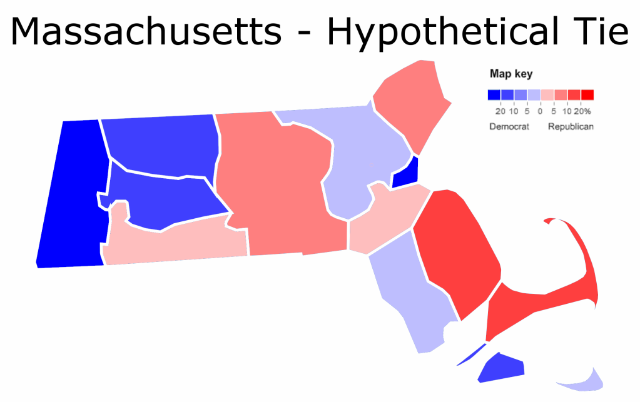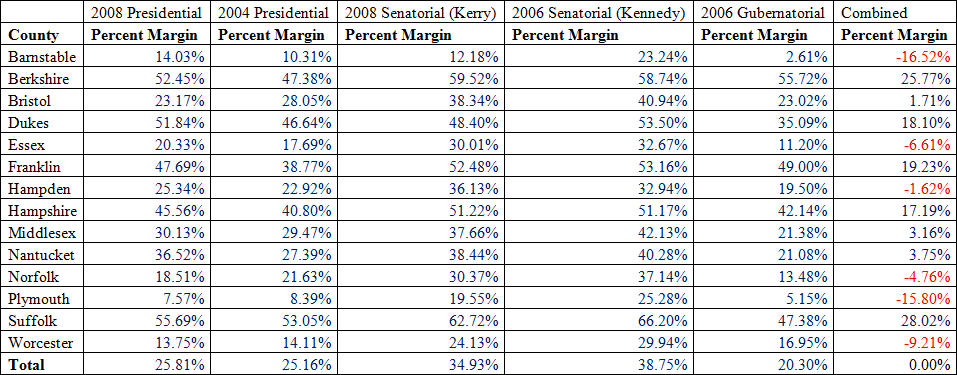• CA-Sen: Rasmussen popped up late Friday with a California Senate poll, taken to reflect the recent entry of ex-Rep. Tom Campbell to the race. Although a Campbell internal showed him dominating the primary field, he isn’t particularly polling better or worse than the rest of the field against three-term Dem incumbent Barbara Boxer. Campbell trails her 46-42, while Carly Fiorina trails 46-43 and Assemblyman Chuck DeVore trails 46-40. Note that this is probably the closest that Rasmussen has had this race, which other pollsters (especially the Field Poll) have always had in double digits for Boxer.
• IL-Sen: In the Democratic Senate primary, Alexi Giannoulias got an endorsement from one of the state’s few well-liked politicians, long-time SoS Jesse White. His long-shot rival David Hoffman got an endorsement that comes with a lot of voters and organizational firepower behind it, though: the Illinois Education Association, the state’s major teacher’s union.
• NY-Sen-B, NY-Gov(pdf): Siena, following Marist from late last week, has gotten in the act, of polling a Kirsten Gillibrand/Harold Ford Jr. Democratic primary. Siena’s numbers pretty closely match Marist: they find Gillibrand with a 41-17 lead over Ford (with 5 for Jonathan Tasini), where Marist gave her a 43-24 lead. Where Siena breaks with Marist is in seeing how a hypothetical Gillibrand matchup with ex-Gov. George Pataki goes; they see Pataki leading 51-38 (and Ford doing even worse, 54-32). Also a bit ominous: Gillibrand’s negatives are creeping up, as she’s currently with a 30/32 favorable. Pataki, however, still is showing no signs of interest, and it’s getting late if he’s going to make a move.
No real surprises in the Governor’s race, according to Siena: Paterson’s popularity, while still awful, is ticking up a little, with a 38/52 approval. Paterson ties Republican ex-Rep. Rick Lazio 42-42 and Erie Co. Exec Chris Collins 40-40, but he’s very unlikely to survive the primary: he loses to Andrew Cuomo 59-21, with potential new entrant Suffolk Co. Exec Steve Levy pulling in 6. Cuomo stomps Lazio 66-24 and Collins 65-23, while Levy leads the Republicans too, beating Lazio 40-33 and Collins 42-26.
• CT-Gov, CT-AG: I’m labeling this as potentially “CT-Gov” even though SoS Susan Bysiewicz announced last week that she wasn’t going to run for Governor (despite having command of the polls), in order to run for AG and, based on her coy responses to the question of whether she’d serve a full term, then run against Joe Lieberman in 2012. There’s been some discussion of whether she even qualifies to run for AG, as one requirement is ten years of legal practice in Connecticut. She practiced for six years before becoming SoS, so the central question here is whether serving as SoS counts as the practice of law or not. This may need to be resolved by the courts – and given the timetable on running a campaign and that she may not be able to wait for a decision, she may have to swallow her disappointment and settle for having to be Governor instead.
• MI-Gov, MI-01: The DCCC may be sighing with relief at this: Rep. Bart Stupak (who holds down an R+3 district) is now sounding unlikely to run for the Democratic gubernatorial nomination in Michigan, despite some interest last week. He tells Politico that it’s “hard for [him] to envision” a campaign, as he’s still bogged down with health care reform in the House and would be starting behind the 8-ball on fundraising and organization.
• NM-Gov: That was a strangely fast exploratory period: never-before-elected attorney Pete Domenici Jr. is officially launching his candidacy, after his name bubbled up from nowhere just last week. He has a lot of name recognition thanks to his ex-Senator dad, but it’s still a question whether he has the chops to make it out of the GOP primary, let alone how he’d fare in November against the seeming juggernaut that is Lt. Gov. Diane Denish.
• PA-Gov: I didn’t even know there were any “celebrity pathologists,” but not only is there one, but he’s planning to run a long-shot campaign for the Democratic gubernatorial nod in Pennsylvania. The “colorful” Cyril Wecht, Allegheny County Coroner for 20 years and a county commissioner for four more, is interested in the race. Wecht has drawn a lot of attention over the years for his skepticism over the Kennedy assassination, but his entry here is newsworthy because of his potential to split the Pittsburgh-area votes (already split between Allegheny Co. Exec Dan Onorato and state Auditor Jack Wagner). In fact, there’s speculation he’s running mostly because of his grudge against Allegheny Co. DA Stephen Zappala, and, by extension, Onorato.
• AZ-08: Here’s another recruiting step-up for the Republicans in a potentially competitive race. They finally found a state Senator, Jonathan Paton, willing to take on Rep. Gabrielle Giffords and her sizable war chest. The GOP’s best bet here previously had been 28-year-old veteran Jesse Kelly, who’d at least gotten some traction on the fundraising front.
• GA-09: If there’s one open seat race I have trouble summoning up any interest in, it’s the GOP primary in the 9th, where there are half a dozen indistinguishable wingnuts trying to out-wingnut each other to replace wingnut Nathan Deal in one of the nation’s darkest-red districts. The field shrunk a bit today, with the dropout of the state’s former Transportation Director, Mike Evans, despite his prior status in the field’s top tier.
• NJ-12: A rich guy apparently with $250K burning a hole in his wallet has Rep. Rush Holt in his sights: Prinecton-area investment banker Scott Sipprelle has decided to take on Holt, and started his campaign with a jolt of self-funding.
• OK-01: I don’t think Republican Rep. John Sullivan has actually voted the wrong way on anything, so I’m wondering if he did something behind the scenes to tick off the local establishment, or if it’s just random teabaggery. Either way, there’s a movement underway in Tulsa’s right-wing circles to draft Dave Rader, who was the University of Tulsa’s football coach in the 1990s, for a primary run against Sullivan.
• PA-06: Rep. Jim Gerlach seems to be retaining most of his establishment support as he reconnects with his district after pulling the plug on his gubernatorial campaign. For instance, he got the support of the Montgomery County GOP chair, Bob Kerns. Gerlach also won a straw poll among GOP leaders in Chester County, although Steven Welch made enough of a dent there (pulling in 40%) that he might be tempted to stick around.
• UT-02: Former state Rep. and current Salt Lake County GOP vice-chair Morgan Philpot has resigned his role in the party, giving rise to speculation that he’s going to challenge Democratic Rep. Jim Matheson in this Republican-leaning seat. (Interesting trivia: the youngish Philpot is a graduate of Ave Maria Law School, the Domino’s Pizza empire’s attempt to branch out into legal education.)
• VA-05: With a substantial percentage of the losers of 2006 and 2008 now considering rematches, here’s one more name who had earlier ruled out a bit but just won’t stop sniffing around his old seat: Rep. Virgil Goode. He may be sensing an opening in the primary by being able to unify the squabbling factions in the GOP primary field in the 5th, torn between establishment fave state Sen. Robert Hurt and various teabagging insurgents.
• Census: One more state is getting into the act, of spending state dollars to make sure that state residents participate in the fast-approaching Census. Florida is starting a marketing blitz to make sure that hard-to-count groups (Hispanics especially, but also college students and farmworkers) respond. With the stakes including not only millions of dollars in federal grant money but also one or two more House seats, Florida certainly has incentive here.

